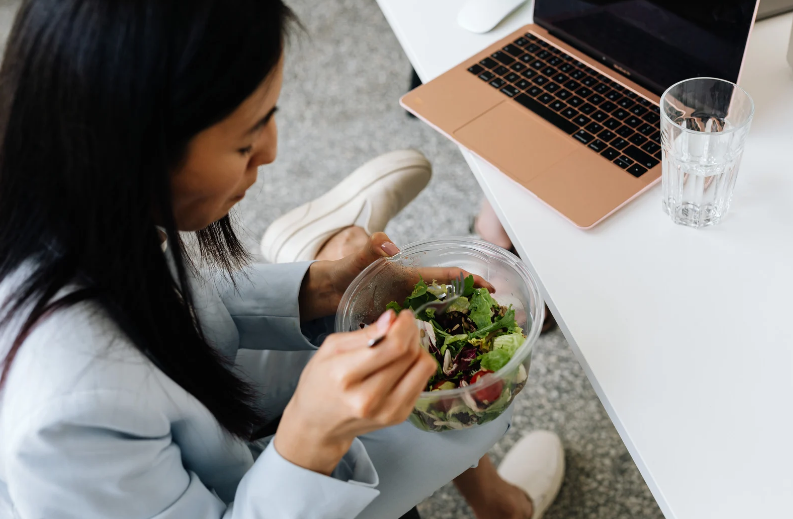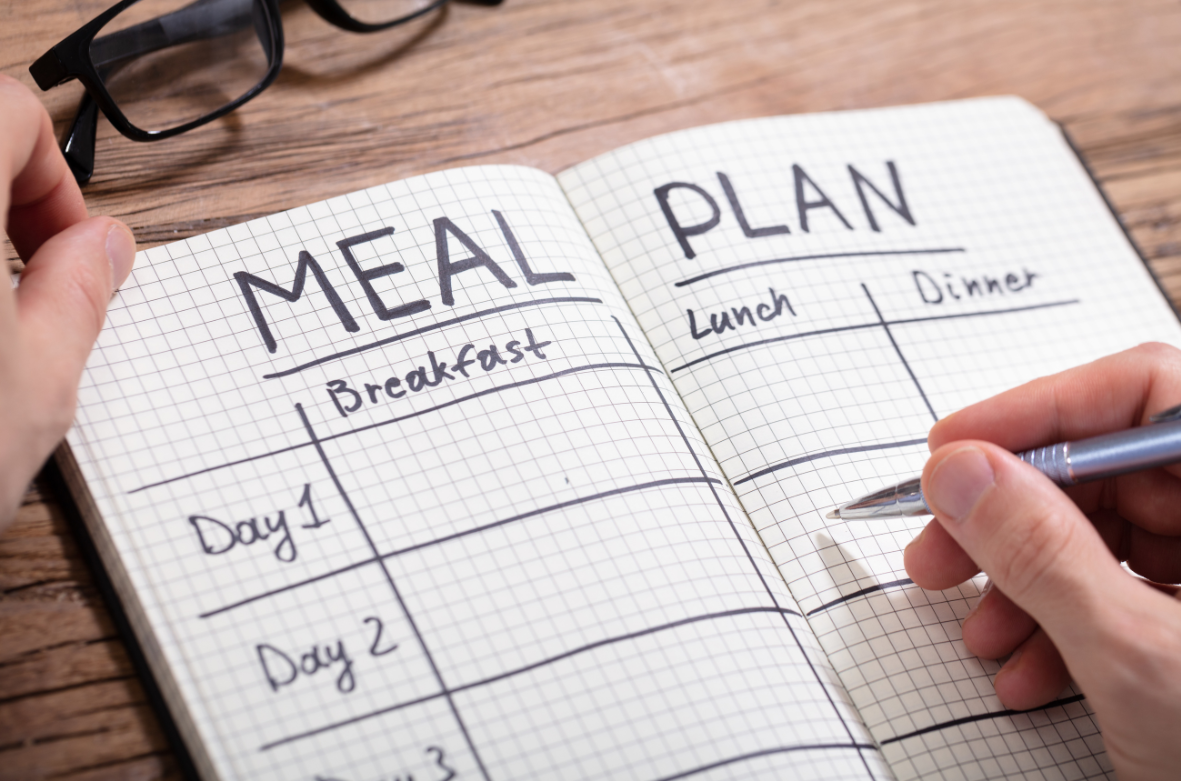With all of those benefits, you’d think the entire human population would be chowing down on bok choy and snacking on spinach. But not everyone has a built-in love for the produce department. If you struggle to fit in your fruits and vegetables, read on for some tips and tricks to make eating a healthier diet easier than ever!
Eat a fruit or vegetable with every meal.
If half a plate of fruits and vegetables seems like an overwhelming goal right now, start by simply adding one fruit or veggie to each meal. You can eat them as a side—think a cup of green beans with dinner or a banana with breakfast—or simply start adding them to foods you already eat. Fruit is a cinch to add to oatmeal, yogurt and cereal in the morning. Add onions and peppers to meat dishes, or pile a few of your favorite vegetables onto your sandwich. Once you start working them in, you’ll welcome the new additions!
Snack smart.
Instead of hitting the vending machine for an afternoon pick-me-up, start snacking on fruits and vegetables. Cut-up veggies and hummus or sliced fruit with yogurt dip will satisfy you more than a candy bar will.
Drink up.
While you should limit the number of calories you get from beverages, if you have trouble fitting fruits and vegetables into your busy life, work them into a drink that you can take on the go. Try out smoothie recipes until you find a few you love, and work them into your rotation as a breakfast or afternoon snack option. You can easily get several fruit and vegetable servings in a yummy beverage. If you simply want juice, look for 100 percent fruit or vegetable juice for it to count as a serving, but limit yourself to no more than one serving of fruit or vegetable juice per day, as the calories are concentrated and juice removes some of the other benefits of produce (such as fiber).
Slurp some soup!
Soups and stews can be a nutritious, filling way to get lots of vegetables into a meal. Soup is an easy way to increase the variety of veggies you eat, too, as it can make some of your least favorite options more palatable. If you don’t make your own, make sure you know the healthy soup options at the grocery store.
Be ready at all times.
Have cut-up fruits and vegetables in the fridge ready for munching at all times. Whether you buy the pre-cut options in the produce department or take the time to cut and bag it yourself, you’re more likely to eat it if it’s readily and easily available. Have hummus, low-fat ranch or fruit dip on hand, too, if it’ll encourage you to eat up.
Keep them in sight and in mind.
Just like you keep sweets out of sight to discourage incessant snacking, keeping fruits and veggies in sight will help you think of them as an option for eating. Stock a fruit bowl at work each week and keep a bowl on the kitchen counter at home so you’ll be more likely to eat it when you’re hungry.
Bar hop.
Next time you’re blanking on a quick, easy place to grab lunch, head to the salad bar at a local grocery store. With an endless variety of vegetables, cut fruit and soups, it’s an easy way to make sure you get a meal rich in nutrients and fiber.
Start smart.
Make it a habit to order a salad or vegetable-based soup when you’re out at restaurants. These fiber-rich starters may keep you from overeating when your meal comes, in addition to helping you add more vegetables into your day.
Bag it up.
It may be more expensive to buy pre-chopped lettuce mixes, but they make whipping up a salads a breeze. Throw a few into your shopping cart so you can take salads to work for lunch or have dinner salads ready throughout the week. Just make sure your salad toppings are healthy ones!
Use the freezer.
If you buy produce in bulk only to have it rot in your refrigerator before you get to it, start using your freezer more frequently. Have a stock of frozen fruits and veggies on hand at all times so you’ll always have them ready for smoothies and easy dinner sides.
Chop them up.
If you have a hard time crunching into big vegetables, try slicing and dicing them into a more manageable size. Shred carrots and zucchini or finely diced onions, peppers and spinach to hide in pasta sauces, hamburger patties, omelets and casseroles.
Pack portable produce.
If you’re a snacker who gets hungry when you’re out running errands or on the way home from work in the early evening, carry easy-to-eat fruit and vegetable items for snacking. Spinach and kiwi may not be convenient on the go, but baby carrots, chopped broccoli and celery sticks are great for munching anywhere, as are no-muss, no-fuss bananas, apples and grapes. Dried fruits like raisins and prunes are easy to have on hand for a quick snack, too.
Find the ones you love.
While you should aim for a wide variety of fruits and vegetables in your diet, don’t hesitate to stick to the handful you love if you can only stomach a few. It won’t do you any good to buy the spinach you know you hate if it’s just going to sit in your crisper until it turns into goo. Buy your favorite fruits and vegetables and eat up, while allowing yourself to experiment with new options every now and then. You never know—you might find a new favorite!
The USDA and the Centers for Disease Control and Prevention both have calculators on their sites to help you calculate how many fruit and vegetable servings you should aim for each day. Everyone’s caloric and dietary needs are different and depend on age and activity level, so see what’s recommended for you and make that your new goal.












